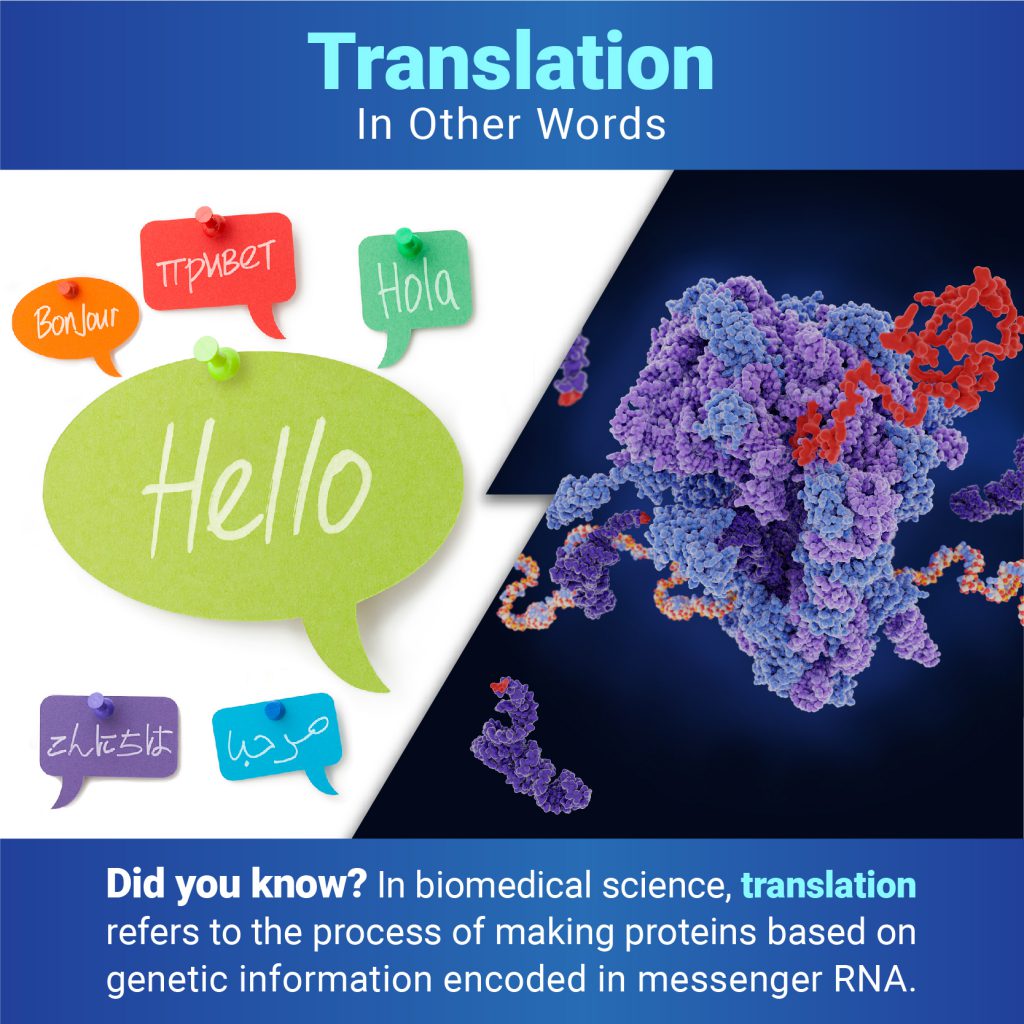In everyday use, most people understand translation to mean converting words from one language to another. But when biologists talk about translation, they mean the process of making proteins based on the genetic information encoded in messenger RNA (mRNA). Proteins are essential for virtually every process in our bodies, from transporting oxygen to defending against infection, so translation is vital for keeping us alive and healthy.

How does translation work? First, RNA polymerase copies information from the genes in DNA to create mRNA from building blocks called nucleotides. Then, the mRNA molecule passes through a cellular “machine” called a ribosome. The ribosome reads the sequence of nucleotides and translates it into a sequence of amino acids—the building blocks of proteins. In the language of RNA, three nucleotides represent one amino acid.
Our ribosomes can translate about 10 amino acids per second, and rapidly growing cells contain about 10 million ribosomes. This combination allows cells to produce many vital proteins, including those our brain cells need to communicate and others that allow our finger muscles to write or type. So, in some ways, translation is essential for translation!

